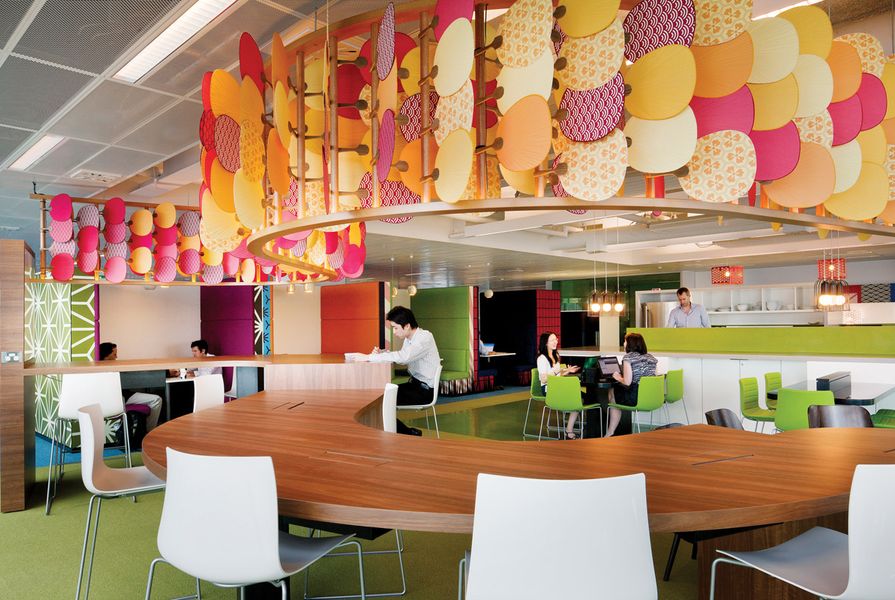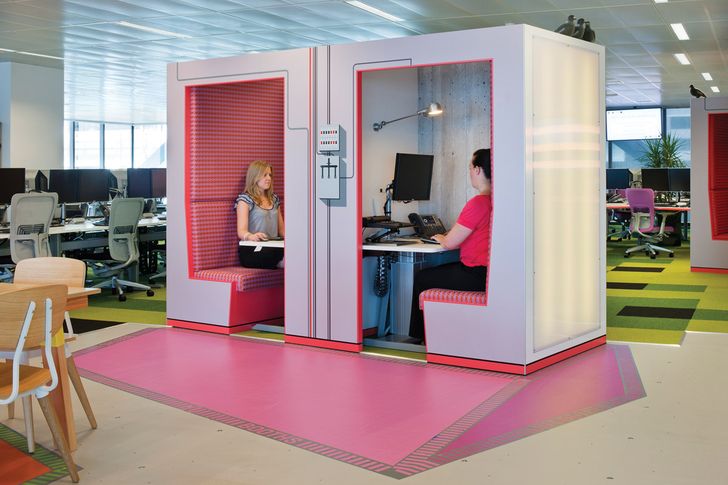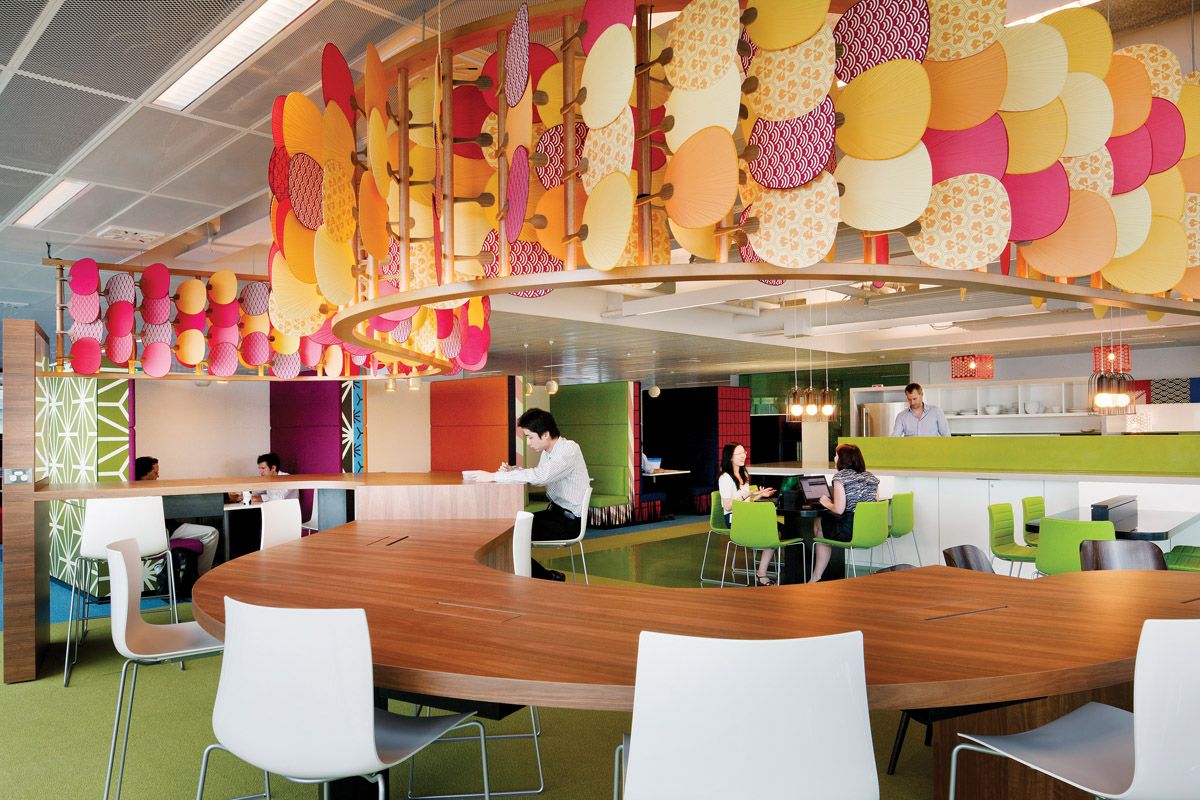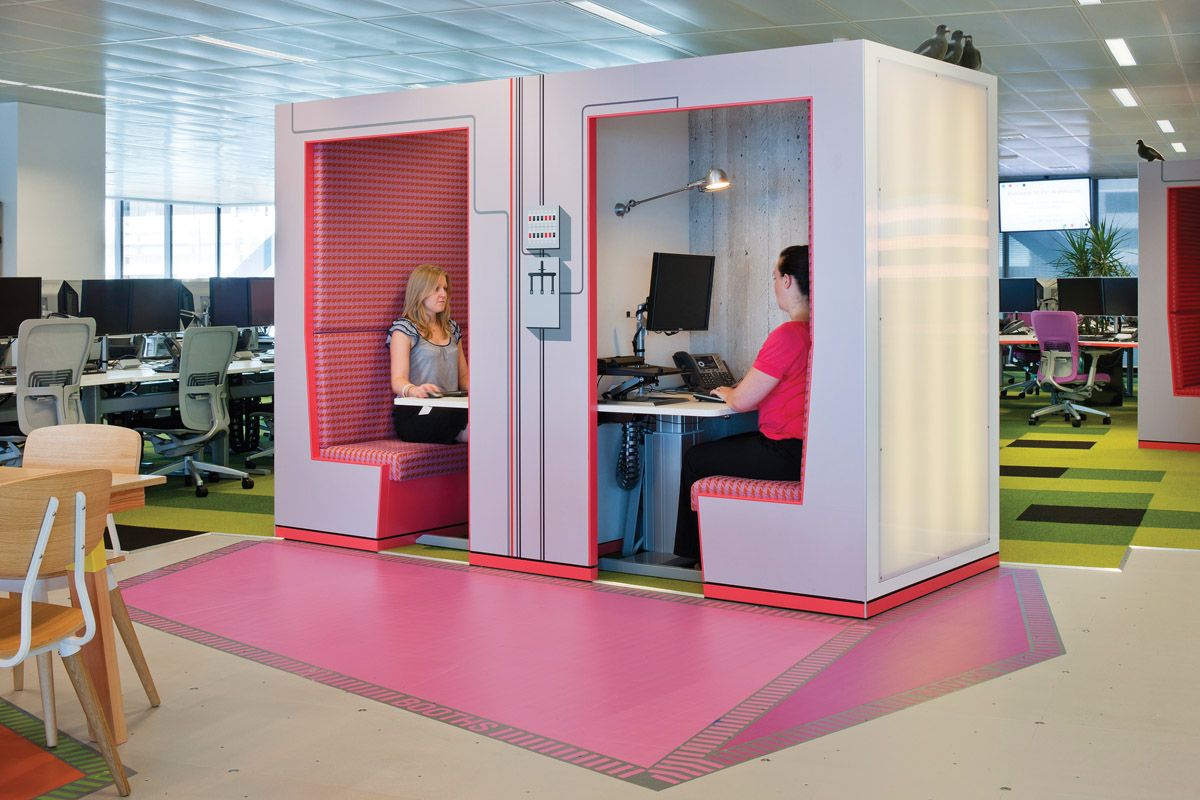Design and people are of course inextricably linked. First, one creates the other, but also one defines the other. A bit like an aquarium, say, which needs fish to actually be an aquarium rather than a glass box of seaweed and rocks. Don’t almost all built spaces need people in them, using them, to make the shift from being a structure to a productive, endearing place to work? It seems obvious that we should intricately study people, behaviour and psychology before designing a working place.
So, how deeply do commercial designers study these factors? Looking at the average centre core, sea-of-grey-desks workplace – not enough. The workspace we’re being asked to concentrate, collaborate, and engage in says nothing about what we need as human beings to achieve all of this. Those involved in providing workspace will argue that in the economic environment, workspace is an easy cost-cut. Heads of property the world over look for ways to increase density and standardize – and this factor drives cookie-cutter space plans. The monotony of these leads people in them to carve out individuality by adorning their workstation with Hello Kitty, with a favourite chair, or even hanging on – with territorial animal instinct in some cases – to a cupboard-like office. But dig deeper into any organization and we find that there is also a strategic agenda to drive innovation, customer service or speed to market. All of these require teamwork and creative energy. Mix in the rise of mobile technology and we find a challenging situation. If we can work anywhere, why would we choose a heartless office? I haven’t met a head of property who can justify fitting out, cleaning and cooling empty space.
Macquarie Group levels 08–09 at One Shelley Street, Sydney, designed by Clive Wilkinson Architects and Woods Bagot.
Image: Shannon McGrath
Can we have our cake and eat it too – grow the business and leverage the cost of workspace? By understanding people, and the behaviours we want to encourage, I believe we can. The process of designing a workplace is equally critical to the outcome if you’re headed down this path. “Get the brief right” – we’ve heard that before. I think of “get” in this sentence as being like “gather.” Gathering the brief right means engaging people in a measured and specific way. By drawing upon psychological methods typically reserved for more therapeutic settings, you can tailor a sharp program to design solutions that match the business agenda. This process can also involve watching behaviour and space use, but then looking far and wide for precedents, not just to other workplaces but relatable experiences, to explore the options.
The design outcomes are full of movement and choice, allowing people to be introverted or extroverted, supporting concentration, creativity and collaboration in spaces designed for those tasks. It’s not about personalizing your desk, but personalizing your day and selecting the right places to do the best work. This new space drives behaviour and supports growth in the business. The accountants among us may reel at creating such abundant environments, but they can be highly efficient. Challenging one-grey-desk-per-person can make savings in space, but challenging how people use space can also increase flexibility and impact operating costs.
So, does it work? Cost saving is just the bridesmaid in comparison to the bride. The real gain is in the business results organizations are recording when they go down this route. Macquarie Group’s activity-based workplace at One Shelley Street in Sydney, designed by Clive Wilkinson Architects and Woods Bagot, is a good example of a goal-driven workplace. Their post-occupancy results reveal compelling percentage leaps in a range of hard and soft metrics, positioning the brand as visionary, innovative, agile, and leading the pack. Not all case studies like this adopt the most radical end result, but they have all recorded the real business benefits of aligning their workplace closely to their vision. This shift has supported growth in organizations that Woods Bagot is working with, including Eversheds Lawyers in London, GPT Group, Google, Department of Treasury and Finance in Victoria, and the BDA with plenty more in the pipeline.
The key is linking human behaviour to your vision as an organization – what your people do is your business, so support it wisely.
Source

Discussion
Published online: 8 Mar 2012
Words:
Natalie Slessor
Images:
Shannon McGrath
Issue
Artichoke, December 2011


















